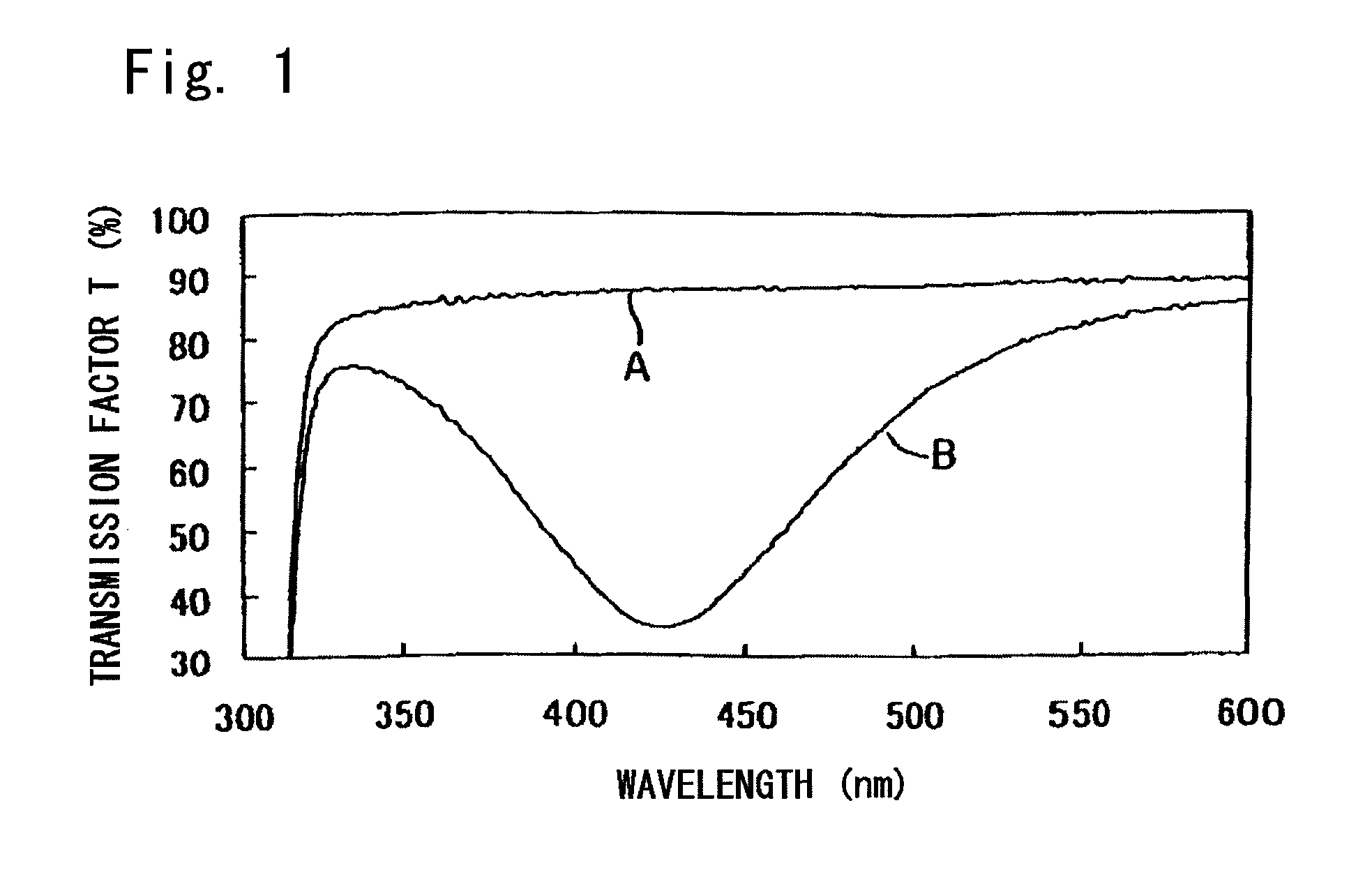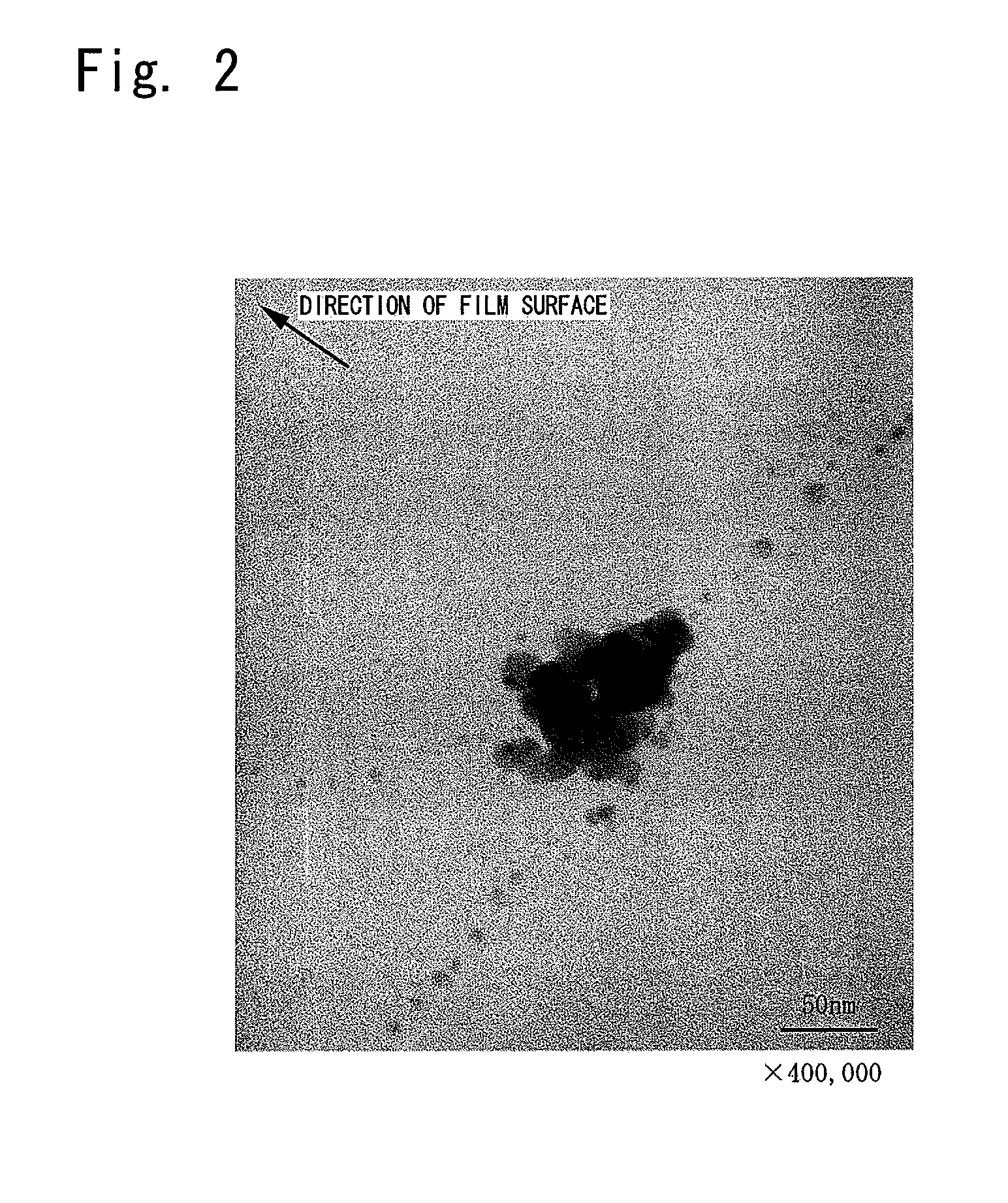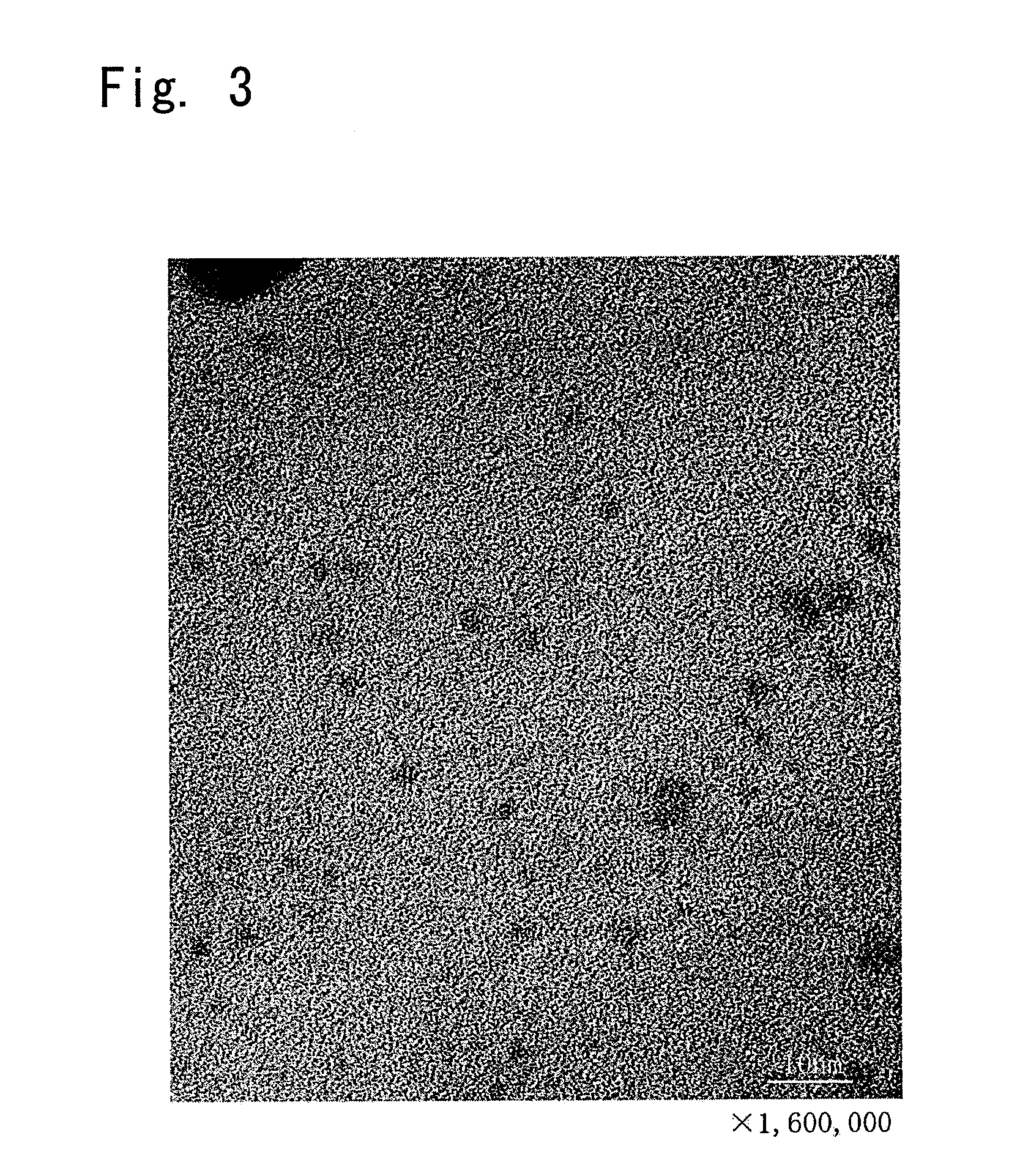Microprotein-inactivating ultrafine metal particles
a technology of microproteins and metal particles, applied in the field of microproteininactivation ultrafine metal particles, can solve the problems of difficult to completely remove minute substances, and achieve the effect of effectively inactivating and effectively inactivating microproteins
- Summary
- Abstract
- Description
- Claims
- Application Information
AI Technical Summary
Benefits of technology
Problems solved by technology
Method used
Image
Examples
example 1
[0092]5 Kilograms of a low-density polyethylene resin was blended with a silver stearate of an average particle size of 100 μm in such an amount that the content thereof was 1.5 wt %, and was extruded by using a biaxial extruder (manufactured by Toyo Seiki Seisakusho, LTD.) at an extrusion-forming temperature of 220° C. to prepare a film of a thickness of 50 μm.
[0093]The film was confirmed for its effect for inactivating mite allergen, effect for inactivating enzymes and infrared ray absorption peak near 1518 cm−1, and was evaluated.
example 2
[0094]A film was prepared in the same manner as in Example 1 but changing the content of the silver stearate to be 1.0 wt %, and was confirmed and evaluated.
example 3
[0095]A film was prepared in the same manner as in Example 1 but changing the content of the silver stearate to be 0.5 wt %, and was confirmed and evaluated.
PUM
| Property | Measurement | Unit |
|---|---|---|
| particle size | aaaaa | aaaaa |
| particle sizes | aaaaa | aaaaa |
| particle size | aaaaa | aaaaa |
Abstract
Description
Claims
Application Information
 Login to View More
Login to View More - R&D
- Intellectual Property
- Life Sciences
- Materials
- Tech Scout
- Unparalleled Data Quality
- Higher Quality Content
- 60% Fewer Hallucinations
Browse by: Latest US Patents, China's latest patents, Technical Efficacy Thesaurus, Application Domain, Technology Topic, Popular Technical Reports.
© 2025 PatSnap. All rights reserved.Legal|Privacy policy|Modern Slavery Act Transparency Statement|Sitemap|About US| Contact US: help@patsnap.com



